#The House on Telegraph Hill
Explore tagged Tumblr posts
Text
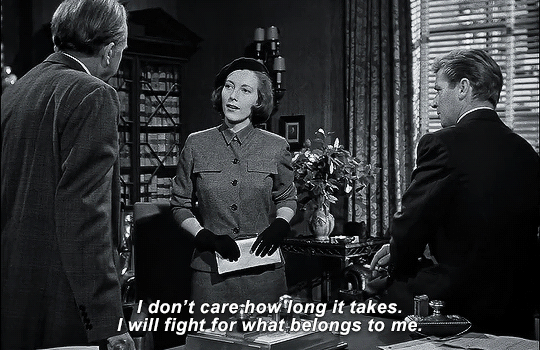
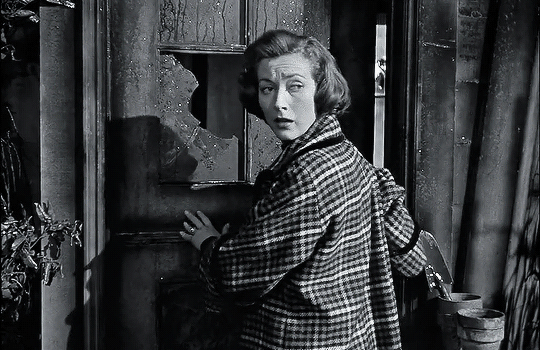
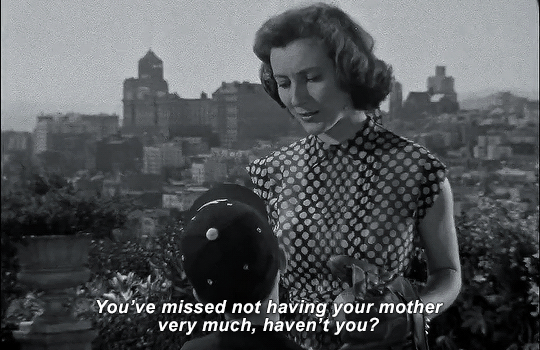
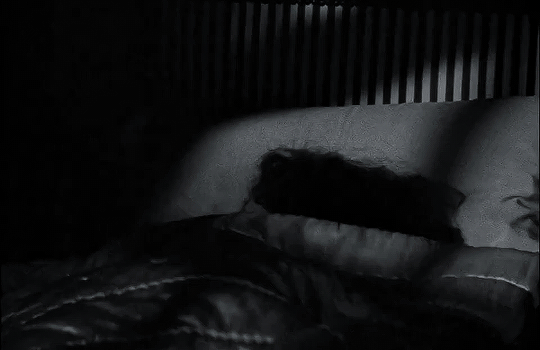
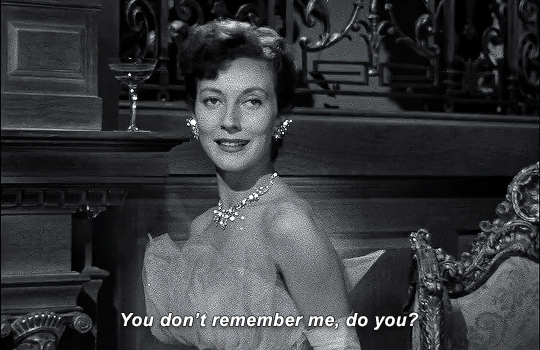

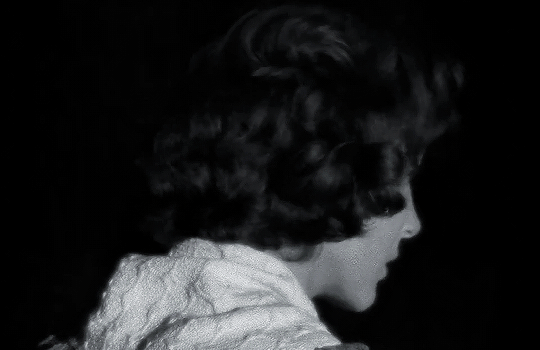
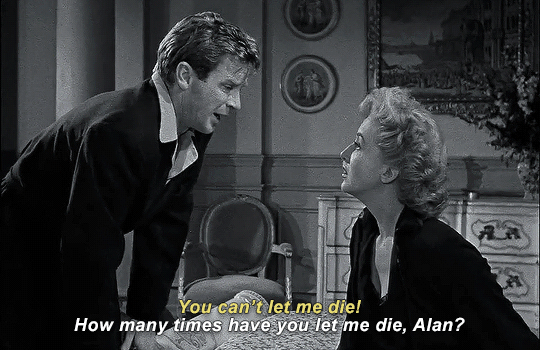

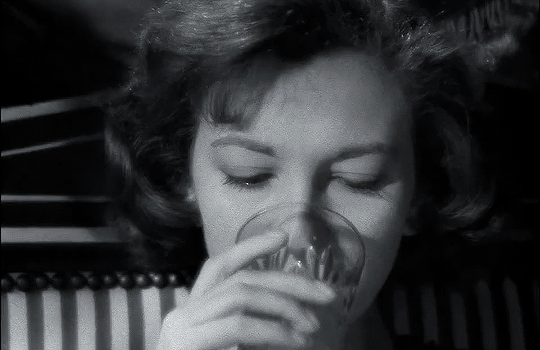
WATCHED IN 2023: I had a strange feeling that Aunt Sophie saw through me. I wondered, if I could have spoken to her, whether she would have understood. She did look kind and wise. Yet I couldn't help myself from feeling that something was wrong in this house.
THE HOUSE ON TELEGRAPH HILL (1951) DIR. ROBERT WISE
#this was pretty decent !! and she is gorgeous :)#watched in 2023#*gifs#人#the house on telegraph hill#robert wise#the house on telegraph hill 1951#the house on telegraph hill (1951)#filmedit#valentina cortese#richard basehart#fay baker#william lundigan#filmgifs#1950s#50s
9 notes
·
View notes
Text
The House on Telegraph Hill (1951)

1 note
·
View note
Text
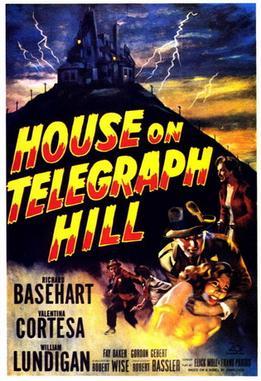
#55. The House on Telegraph Hill - Robert Wise
0 notes
Text

The House on Telegraph Hill • Director Robert Wise
0 notes
Text
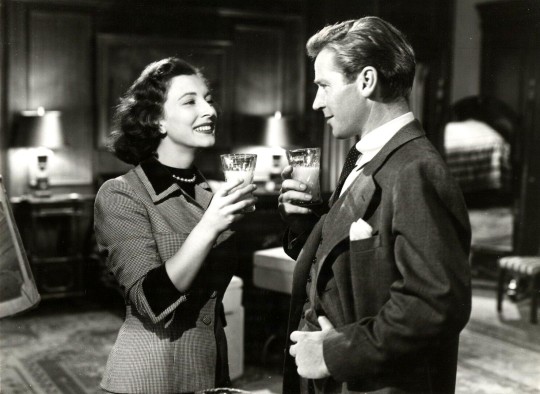
Valentina Cortese and Richard Basehart in The House on Telegraph Hill (Robert Wise, 1951)
Cast: Valentina Cortese, Richard Basehart, William Lundigan, Fay Baker, Gordon Gebert, Steven Geray, Herb Butterfield, Natasha Lytess, Kei Thin Chung, John Burton, Katherine Meskill, Mario Siletti. Screenplay: Elick Moll, Frank Partos, based on a novel by Dana Lyon. Cinematography: Lucien Ballard. Art direction: John DeCuir, Lyle R. Wheeler. Film editing: Nick DeMaggio. Music: Sol Kaplan.
The key to a successful thriller is to keep the audience from asking those questions you're not supposed to ask: Why did X do that instead of that? What caused Y to act that way? Would a sane person really behave that way? And when the film ends, have all the loose threads been accounted for? The House on Telegraph Hill just barely manages to dodge those questions, except at the end. It's sometimes rather clumsily put together. For example, we are led to believe at the beginning that the film is being narrated in voiceover by the protagonist, Viktoria Kowalska (Valentina Cortese). But in mid-film we watch a conversation that Viktoria could not have overheard. We later find that the voiceover is actually Viktoria telling her story to investigators, but the momentary break in point of view is jarring. The ending, too, feels rushed. We have invested enough time in the story that we need a clearer outcome for Viktoria and others. The premise is a familiar one, given a postwar spin: A woman pretends to be someone she isn't and suffers the consequences. In Viktoria's case, she was a prisoner in the Belsen concentration camp, where she befriended Karin Dernakova (Natasha Lytess), who died there after telling Viktoria that she had a son who had been sent at the start of the war to live with her aunt in San Francisco. When the camp is liberated, Viktoria, who has no family of her own left in Poland, finds it expedient to assume the identity of Karin, whose papers she has been given for safekeeping. Viktoria is well-meaning; she doesn't really plan to defraud anyone, but through a rather rushed-through series of circumstances, she winds up in San Francisco pretending to be the mother of Karin's child, Chris (Gordon Gebert). Not only that, she also marries Chris's guardian, Alan Spender (Richard Basehart). So now she finds herself in an elegant mansion on the top of Telegraph Hill, playing mother to a boy who stands to inherit a fortune. And of course she also finds herself in danger. Cortese's performance makes some of this credible, but it was her only important film in America: She married her co-star, Basehart, and returned to Italy. He went with her, but except for Federico Fellini's La Strada (1954) and Il Bidone (1955), his European films were undistinguished, and he returned to the States after their divorce in 1960. The House on Telegraph Hill is plenty watchable, if only because of cinematographer Lucien Ballard's use of the San Francisco location.
0 notes
Text
yellowjackets fav books from my books hc's
lottie - the haunting of hill house, a hero born and the song of achilles
natalie - the locked tomb series, radio silence and last night by at the telegraph club
van - one last stop, percy jackson - specifically the titians curse and the lord of the rings series (+ the hobbit)
tai - infamous, all 7 harry potter books, and the a good girls guide to murder series
shauna - the goldfinch, a secret history and the hunger games series (+tbosas)
jackie - the six of crows dulogy, the seven husbands of evelyn hugo and the mixed-up files of mrs. basil e frankweiler
#yellowjackets#lottie matthews#charlotte matthews#nat scatorccio#natalie scatorccio#van palmer#taissa turner#shauna shipman#jackie taylor
23 notes
·
View notes
Text
Taylor Swift interview: 'A relationship? No one’s going to sign up for this'
“No one’s going to sign up for this and everything that goes with it. Like, “Hi, nice to meet you, want a date? Do you love camera flashes? I hope you do!” I don’t know what’s going to happen if I’m ever content in a relationship – no idea how that’s going to work,’ she continues, still smiling. ‘I don’t even know if that’s possible with the life I have.”
In an exclusive interview, the Shake It Off star talks to The Telegraph about sex, the Swifties and her friendship with Ed Sheeran.


'I had a bit of a reputation for having a lot of boy-bashing songs. Which is a really sexist way of saying heartbreak songs. ' Photo: Paola Kudacki/Trunk Archive
By Mark Sutherland GMT 28 Feb 2015 (x)
Taylor Swift is not only the biggest pop star on the planet, but also the biggest worrier. Right now she is worrying about this interview – her first major sit-down chat of the year. She has just come from a production meeting for her forthcoming world tour, fretting about the set list, sight lines and how to get her piano to the right part of the stage at the right time. Before that, when she woke up, she was immediately gripped with anxiety about something she said last night (even though it was only using the word ‘interjection’ when she meant ‘injection’). ‘I worry about everything all the time,’ she says with a grin. ‘We could do our entire interview me telling you how many things I’ve worried about since breakfast. “The Neuroses of Taylor Swift” is probably going to be the article headline.’
Most pop stars of Swift’s stature pay other people to worry about these things. And while the buzz of activity as we arrive at the well-appointed Beverly Hills house being used by Team Swift for their production meeting indicates that she has no shortage of people looking out for her, she remains hands-on with every aspect of her career.
But then the one thing she doesn’t need to worry about is how that career is going. It is Grammys weekend when we meet, and although Swift is attending rather than performing, she is still going to be the centre of attention.
There are plenty of reasons. She is the only artist ever to sell more than a million first-week US copies of three separate albums – Speak Now in 2010, Red in 2012, and 1989, released in October, which racked up the biggest first-week American sales since 2002 and went to number one around the world, including the UK, where it was the best-selling album by an international artist last year. Its lead single, Shake It Off, was an iTunes number one in 64 countries. She is the first artist since the Beatles to spend six or more weeks at number one in the United States with three consecutive albums (at the time of writing, 1989 is into its 11th week at the top).
Her cultural weight – 52.8 million Twitter followers, 22.1 million on Instagram and 74.4 million likes on Facebook – means that she can break acts with a single tweet, and she regularly shines that spotlight on new artists she enjoys. Her removal of her back catalogue from Spotify resulted in the music-streaming company’s CEO, Daniel Ek, justifying its entire business model. ‘I didn’t think it was going to be international news or affect a public offering,’ she claims. ‘If I have an opinion on something, I act accordingly – and I believe music is valuable.’
She ponders whether she’ll be the last person ever to sell this many records. ‘There were so many doomsday theories about the music industry,’ she says. ‘For the last two albums I’d sold one million copies in a week, and I knew people were waiting to see me not hit that number and then diagnose the music industry as dying or dead. Which is a lot of pressure to put on one artist and one album.’

Does she think future artists will sell records like this again? ‘It’s possible,’ she says. ‘We all have to step up and make albums that are good, top to bottom, if selling albums is still important. It is to me, but a lot of artists have already given up on that. I have friends who just think it’s not attainable, which I feel is a very defeatist way to look at life.’
And defeatism is not the Swift way. Her infectious can-do attitude is evident from the moment she greets me brightly at the door, wearing an elegant dress, with her hair swept back. Despite knowing her height (5ft 10in), I find her taller than I expected and slimmer, too. Swift has ordered in coffee, apologising for the lack of tea (‘You’re British! I should’ve known!’) and peppers conversation with first-name references to her famous friends.
Single after a string of high-profile relationships with men such as Harry Styles, Jake Gyllenhaal and Taylor Lautner, she has recruited a ‘squad’ of high-achieving close girlfriends, and spends what little downtime she gets baking with the supermodel Karlie Kloss, strolling around New York with the Girls actress and writer Lena Dunham or, as her recent Instagram posts indicate, whale-watching in Hawaii with the indie band Haim. ‘The thing about my girlfriends right now is that none of them needs me for anything other than friendship,’ she says. ‘I love the fact that they are all passionate about their jobs, whatever their jobs are. A lot of celebrity-type people have this group of people around them where their friends’ main priority is them, and they feel comfortable with that dynamic. I don’t feel comfortable with that dynamic.’
Taylor Alison Swift was born in West Reading, Pennsylvania, on December 13 1989 (13 is her lucky number). She spent her early years on a Christmas-tree farm run as a side business by her parents. Her father, Scott, is a wealth management adviser with Merrill Lynch; her mother, Andrea, worked at a mutual fund before becoming a full-time mother to Taylor and her younger brother, Austin. While at school in Pennsylvania Taylor often appeared in musical productions, local fairs and talent shows; and her love of country music was sparked by Shania Twain, perhaps the last country superstar to cross over to the pop charts as successfully as Swift.

The Swifts moved to Nashville, the home of country music, when their daughter was 15. Taylor and her mother had four years earlier hawked a demo CD around Nashville’s Music Row, going door-to-door in search of a break. Shortly after the family was uprooted, that break arrived. Swift became the youngest songwriter ever to be signed to Sony/ATV Music Publishing, and a year later a record deal followed with the fledgling label Big Machine, which released her eponymous debut album in 2006. Crucially, she became one of the first country artists to use the internet to market herself, expanding her reach beyond the genre’s traditional heartlands to recruit an army of teenage girl fans.
By the time of her second album, Fearless, in 2008, Swift was already shifting away from country (its lead single, Love Story, became her first hit in the UK, where she was marketed as a pop artist). Fearless made her the youngest ever winner of the album of the year Grammy (in 2010) and the first country star to win an MTV video award (best female video for You Belong with Me in 2009). Her acceptance speech was interrupted by the rapper Kanye West, who stormed the stage incensed that Beyoncé hadn’t won. Swift was devastated, but the incident catapulted her to mainstream attention. Barack Obama was moved to call West a ‘jackass’.
Her subsequent albums Speak Now and Red were progressively a little less country, a little more pop, but she has remained popular in Nashville. In 2013 she became the second ever winner of the Country Music Association’s Pinnacle Award, its highest honour. The previous winner, Garth Brooks, was in his mid-40s when he won – Swift was 23.
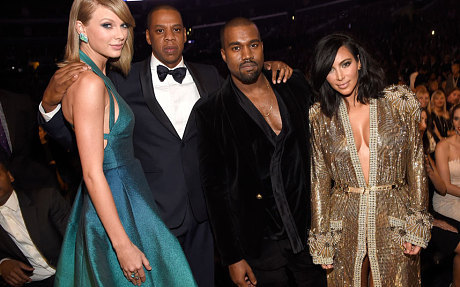
Taylor with Jay Z, Kanye West, and KIm Kardashian at the Grammy Awards last month. PHOTO: Getty
The Grammy Museum in Los Angeles has an entire floor dedicated to her story. There, footage of her singing Twinkle, Twinkle, Little Star as a toddler, belting out the national anthem at sports events as a child and improvising a song about traffic for a country radio station as a teenager reveal that she has undoubtedly always been talented, if not prodigiously so. ‘I’m really lucky I got 10 years of practice in before we reached this point,’ she says. ‘I’ve climbed a lot of flights of stairs, rather than got a speed elevator. [Nowadays] an artist is just shot out of a cannon into the stratosphere.’
Before the release of 1989 Swift moved to New York. She cut her trademark long, blond hair and embraced feminism, although not, she says, as ‘some strategy – being a feminist is just part of my life’. She started going out drinking more, gradually easing away from the prim image that defined her teenage years, although she stresses, ‘My point is not to be sexy, my point is not to turn masses of people on.’ And she made a determined attempt to cause a ‘change in the narrative’ that had portrayed her as some sort of serial-dating bunny-boiler (an idea her song Blank Space skewers deliciously, by writing from the perspective of that character). ‘There was a bit of a reputation for having a lot of boy-bashing songs,’ she says, referring to the likes of I Knew You Were Trouble and Should’ve Said No. ‘Which is a sexist way of saying heartbreak songs. To trivialise someone who’s heartbroken is really cruel. But people have to simplify things,’ she says. ‘Everybody’s got busy lives, they don’t have time to form a complex opinion of me and my music. I’m in a different place in my life, where love isn’t really a priority. I haven’t dated anyone in years so there’s less chatter about the serial dater thing. I’m just really excited at an awards show when they don’t make some weird joke about my dating life.’
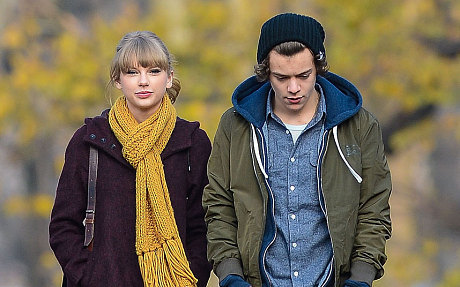
With Harry Styles in New York, December 2012. PHOTO: Getty
The other night she was photographed out with the Irish singer-songwriter Andrew Hozier-Byrne and some other friends, and she became anxious about what the gossip sites would say the next day. ‘I just got so freaked out that people were going to say I was dating him,’ she says. ‘I started thinking, “I can’t let this ruin my friendships with dudes.” I didn’t let it ruin my friendship with Ed [Sheeran] – they always said we were dating and we never were. But sometimes I get really scared.’
There was a time when Swift would refuse to use the internet for fear of what she might see (‘It’s very difficult to know people have the wrong impression of you and you can’t do anything to correct it’), but now she spends a lot of time online, interacting with the Swifties, her hardcore fans. ‘Not in a way that’s like, having sycophantic worshippers,’ she stresses. ‘My fans make fun of me – it’s really cool. They have all these Gifs of me making an idiot of myself or tripping and falling on stage. They bring humour back into it for me. I get too serious sometimes – you can probably tell – and they bring me back to like, “OK, I’m not really doing anything that difficult. I just need to calm down.” ’

Performing on The Voice, 2014. PHOTO: Getty
Based on what she learns from ‘lurking’ on their social-media profiles, Swift has made fans post-break-up playlists, paid off their student loans and sent gifts for Christmas and Valentine’s Day, accompanied by handwritten notes. You would assume she has people to do this for her, but she insists she does it all herself (‘I don’t take it to FedEx, but I pack the box and tape it – I have so much bubble wrap in my house!’).
‘I love them,’ she says of her fans. ‘They are cool and smart and hilarious and focused on the right things. I want to make the most of this cultural relevance or success or whatever you want to call it, because it’s not going to last. I have to be as good a person [as I can] while my name matters to them. Because it’s not always going to matter to kids who are 15 and really struggling with who they want to be or [because] their friends were brutal to them at school that day. That’s actual turmoil. I have to do everything I can to make their day better while I still can. [Sending presents] is fun for me. If I go a week without sending something, I start to feel sad. I’m getting to know them on a person-by-person basis. When I pick people to send packages to, I go on their social-media sites for the last six months and figure out what they like or what they are going through. Do they like photography? I’ll get them a 1980s Polaroid camera. Do they like vintage stuff? I’ll go to an antiques place and get them 1920s earrings. Do they work out a lot? I’ll get them workout stuff. When you actually get to know them on a person-by-person basis, you realise what you’re doing is special and sacred and it matters.’
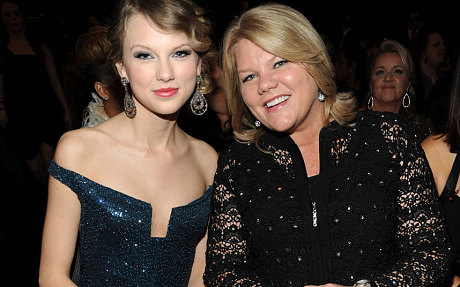
With her mother at the Grammy Awards, 2010. PHOTO: Getty
It is impossible to imagine other pop stars spending time doing all this. Can she really be this nice all the time? ‘No, because that’s annoying, too,’ she says, laughing. ‘And it’s not real if someone appears to never have any issues with anyone. I have my friends, I have enemies. I have bad days when I don’t want to go to a photo shoot, but I’m not going to show up four hours late, I’m going to be there on time. I’m not nice all the time but I try not to be carelessly rude to people who don’t deserve it.
‘When I’m with my friends, we don’t say glowing things about everybody,’ she says, grinning conspiratorially. ‘We’re not sitting around going [adopts Stepford Wives-esque voice and posture], “You know who’s really special and wonderful?” That’s not what we talk about – we’re normal girlfriends.’
But just whom they might be talking about in that way, Swift is not prepared to share. The gossip sites’ one-time fascination with her love life may have been temporarily frustrated, but it threatens to be replaced by interest in her apparent feud with Katy Perry, the rumoured subject of a track on 1989, Bad Blood. ‘I’m not giving them anything to write about,’ she says, smiling steelily. ‘I’m not walking up the street with boys, I’m not stumbling out of clubs drunk. But I’m never going to talk about her in my interview. It’s not going to happen.’

Taylor with Karlie Kloss at a Victoria Secrets show in London last December. PHOTO: Getty
Instead, Swift is concentrating on trying, in her words, ‘to create a beautiful life’. That life would appear to have no room in it for a significant other right now. She likes to ‘play the tape of her life forward’ when she’s making decisions. But ask her what the tape looks like if you fast-forward five years and she seems less certain. ‘I’ll be 30,’ she gasps. ‘I’ll probably still be single, let’s be honest. No one’s going to sign up for this and everything that goes with it. Like, “Hi, nice to meet you, want a date? Do you love camera flashes? I hope you do!” I don’t know what’s going to happen if I’m ever content in a relationship – no idea how that’s going to work,’ she continues, still smiling. ‘I don’t even know if that’s possible with the life I have.
‘“In five years’ time she’ll be so afraid of everything, she doesn’t leave her house,”’ she says, laughing self-mockingly. ‘“She’s just surrounded by cats. So many cats, they’ve divided themselves up into armies and she wanders around lint-rolling the couch that no one’s going to sit on because she’s afraid to have people over…”’

Singing at a baseball game in 2009. PHOTO: Getty
Swift is not even sure she’ll have made another album by the time 2020 rolls around. ‘I’m not going to put out an album until I’ve made one that’s better than this one and that’s going to be really hard,’ she says. And how might her music evolve if she does find love? ‘If that does happen, I think I could find complexity in happiness,’ she says. ‘I don’t think anything’s ever simple. Just because you’re happy in a relationship doesn’t mean that there aren’t moments of confusion or frustration or loneliness or sadness. Hopefully, if I ever find some sort of meaningful relationship, I’ll be able to still find inspiration, just through the everyday ups and downs.’
For now, though, her life is mapped out indefinitely. As we start to leave she runs through her schedule for the rest of the day: watch the fan reaction videos to her latest batch of gift-giving, work out, go to a dress-fitting, more meetings, then a pre-Grammy party. Tomorrow she will attend the actual Grammys with her best friend from high school, Abigail Anderson, a charity worker. (Despite three nominations – record of the year, song of the year, and best pop solo performance, all for Shake It Off – she won’t add to her four Grammys, but will still look as if she’s having more fun than anyone else.) She has a Brit Awards performance to plan and a new single (Style) to release. The 1989 World Tour kicks off in May, including a date at the British Summer Time Festival in Hyde Park in June.
‘I used to think it was important to find a boyfriend,’ she says before politely taking her leave. ‘But I don’t feel that it is now. I just want to have as much fun and as many adventures as possible.’ And for once, you suspect, she really doesn’t need to worry.
1989 is out now on Big Machine. The 1989 World Tour comes to Britain in June

8 notes
·
View notes
Text
“I used to read ads for guitars in Reveille and just ache for one. Like everyone else, I used God for this one thing I wanted. 'Please God, give me a guitar.’ Elvis was bigger than religion in my life. We used to go to this boy’s house after school and listen to Elvis on 78s; we’d buy five Senior Service loose and some chips and go along. Then this boy said he’d got a new record. He’d been to Holland. This record was by somebody called Little Richard, who was bigger than Elvis. It was called Long Tall Sally. When I heard it, I couldn’t speak. You know how it is when you are torn. I didn’t want to leave Elvis. We all looked at each other, but I didn’t want to say anything against Elvis.”
(Maureen Cleave, The Telegraph)
I was born on 29 September 1940, just days before JWL, at 69 Dovedale Road and lived there until I was 22 when I left Liverpool to live and work overseas. I never went back to live in UK. My house was at the other end of Dovedale Road from Dovedale Road School and from Penny Lane. I was near the Rose Lane end of Dovedale Road. I first met John when, after moving to live with his Aunt Mimi, he joined Dovedale Road Infants School aged 5. We were in the same class in primary and junior schools, both passed the 11 plus exam together and both went on together to Quarry Bank where I first met Pete Shotton. John and Pete were inseparable at QB and they with me and my friend Don Beattie made a frequent foursome. Don, Pete and I went on a Liverpool grammar schools exchange holiday to Amsterdam in April 1956 when we were all aged 15. John didn't come. We had a ball. I returned with Little Richard's record of ‘Long Tall Sally’ with ‘Slippin' an Slidin' on the B side. At that time we used to regularly break school rules and cycle to my house from QB on school days at lunch time. Just after the Amsterdam trip on one of those lunchtime sessions I played John the record having first got his attention by telling him the singer was better than Elvis Presley. Well, it stopped John in his tracks and he was lost for words. This was so unusual we all remembered it and many years later after John's murder when Pete Shotton wrote his book he described this incident in detail as it was in every sense a critical moment in John's life. From that point music was going to be his life and it was.
(How I Turned John Lennon onto Rock 'n' Roll by Mike Hill for Mersey Beat)
"I never thought I'd ever meet Little Richard. He was my idol at school. The first song I ever sang in public was 'Long Tall Sally,' at a Butlins holiday camp talent competition! I love his voice and I always wanted to sing like him."
(Paul McCartney in The Life and Times of Little Richard: The Authorised Biography by Charles White, 2003).
Then I broke my arm and had to go into hospital. Who knows what might have happened if I hadn’t broken that arm? We could have taken “We are Siamese if you please” to the top of the pops and become the Elderly Brothers. But Paul and George had already gone a long way together at that time. Actually, viewers, I shared the limelight with Paul on what might be described as his first public stage appearance – certainly on any stage outside the school theatre. When I was well enough to leave hospital, Dad brought Paul and me down to a holiday camp at Wales for a break. Our cousin Mike happened to be producer of the camp talent show and gave us our big chance. Mike thought Paul a rave mimic – although this made him a minority in the family. The rest of them thought that we were simply crackers. I think the only joke they ever laughed at was Paul’s Irish joke. This is about the two Irishmen who came out of a pub just as an aeroplane was flying past. Mick says: “Begorra, Pat, I’d hate to be up in that plane,” and Pat replies: “Oi, Mick, but I’d hate to be up there without it!” And the only reason they laughed at that was because of Paul’s cod Irish accent. Bet you didn’t know that, brother! Anyway, cousin Mike had this idea that Paul was really good. “Why don’t you do your Little Richard piece?” he suggested. Paul’s face was a book study. “Oo-er,” he said doubtfully. “Do you really think so?” “You’d be great, real great,” cousin Mike told him. “I’d be too nervous,” said Paul. In fact he was shaking like Patrick Kerr’s left leg when we finally got him as far as the wings in the theatre. And even then we had to give him a push before we could get him out on stage. But when he found himself standing in the spotlight – without quite knowing how he had got there, may I say – he did his little turn successfully. The applause was just about to die away when the compere turned the spotlight to where I was standing in the wings and called upon me to join Paul in a duet. We must have looked a couple of junior-sized Laurel and Hardys – Paul chubby and all owl-faced, me skinny, pale as powder, and with my arm still in a sling. Anyway we sang “Bye-Bye Love” together and were rewarded with a bar of chocolate each. Talk about the big time!
(Mike McCartney, August 21, 1965, Portrait of Paul for Woman Magazine)
Early on, I’d sung ‘Long Tall Sally’ at an end-of-term party. You could bring your guitar into school on the last day. We had a history teacher named Walter Edge, though we called him ‘Cliff’ Edge because we thought hat was really funny. He was one of our favourite teachers. I got to stand up on the desk in front of all my mates in the class and sing ‘Long Tall Sally’ with my guitar because he let us.
(Paul McCartney, The Lyrics, 2021)
#long tall sally#slippin' and slidin#elvis presley#little richard#john lennon#john and paul#paul mccartney#pete shotton#mike hill#mersey beat#maureen cleave#the songs we were singing#mike mccartney#paul and elvis#john and elvis
14 notes
·
View notes
Text
faut faire danser les femmes.
My story begins in the end. With the sun beginning to char my porcelain, riding red and violet over miles of atomic mass. By the end of the road, my shoes were worn with broken nature. But before my death, I rode a mountainous sea away from a barrel-chested man, namely put as my husband. The rock first came to me in a nightmare while aboard the SS. Mary. I had traveled overseas before, and it was a quirk of fact that the ship, no matter how goldy, always cradled like a misrun carriage, bumping over unpolished granite. So shook the landscape in my nightmare as well. There was a mincer in front of me. It was placed beside a rock. In the dream, the widescape was covered in thin sheets of sand. The trees were wild and howled like wolves strewn into the raging sky. Careful she crept; she was not me because the I in my dream had no feet. Simply an eye of the mind that granted a view of myself from whatever window looked down onto this horacescape. I directed her to walk closer to the mincer. It was then that the rock started to bellow out in simple waves of anguish. It was yelling to be set free against its ugly titanium restraints. She almost pitied it. The woman would take the mincer with a static, almost illuminary hand but stare at the rock with an unmoving notion. Salt wavered into the air as her limbs began to feel spent; she could feel the boat pulling her back to the shores of minimal consciousness closer every nanosecond, grappling her away from the original deed. The rock was lying dead like a cold fox, claiming its early spot in hell. Waiting for the final gut of termination. She could crush the rock, but what then?
It didn’t make her a predator.
I would have vowed to never harm my husband once I had awoken in my saddened condition and out of that harsh story. For it would bring me lower than the man himself. I knew I was now truly running, running away from the midwave heat that bit close to my clothes and flamed the cage that once housed my books, my telescopes that let me talk to the stars late in the evening when my husband singed tableside decks with his less than pleasant cigars. That did not stop the wafting from following up to my attic window desk of cinnamon and sage. My hand would soon slip during a Sunday night preparation. Sending the iron stove into flames. I had no children and no cathel. Only the prophetic nightmares that came with sniffing the dark herb that crawled its way around our lowly manor of the Greylands. This city chewed with iron teeth and ordered around symmetry like no other grandiloquent beast of the nile. My husband’s old trophies of gunfire gave proof to that undeniable fact of discord that harbored no matter what section of the earth you journeyed forth. They sit stacked mildly rusted under his mantleplace, topped with fleets of dust and mice shit. Before settling, I knew no bounds to fiction. I was as free as a clipped animal could ever get. But once trapped inside a new hellish biome, those old newspapers and telegraphs of the world above became my primary resource as another additive to my perpetual escape. Meconium, isocyanate, the air of another hellnever roadside three thousand miles from ours. All futile in my grand ruse of escape. So I ran, caught to the nearest station west of that long country road. Farther and farther till the SS. Mary was no longer a dream on a yellow postcard lost among the plethora of letters sent in from faraway ports of the world. A secret subscription I had along with the many other secrets I kept from my man.
It rose above anything I had ever seen in my life and took me far, far away.
There was a shortage of oil on our land being stolen by a neighboring townscape just north of the rolling hills. The red men they were called. Their thieves would hound every plant that drenched oil from the underearth. Weaning in heinesy and destruction caused an uproar in an already fatale patriarchy. Our people were starting to see straight through tradition and into welfare. It took the turn of a thousand tides—the crease in the economy—to fully shelter this idea of severity. Our foundation was losing itself. Soon there were no more ports to transfer goods, no more fleets to deliver those postcards I so greatly admired per month. So there I sat, perched between litters of luggage and briefcases of fine men and women boarding the middle-class section of Mary’s idiom. Watching as the moon followed our ship to the enemy lands. Waiting for the sky to shift into a new sun, waging a war blessed foul. A great woman once said sweat is the tears from God shedding down a lubricant for the wind. It took running from my husband to fully furnish the belief and inspire a devil within me to work this war like it was my bitch. Down a winding road and past crowds of townsfolk once I had reached beyond the Pillsbury pines and down crossroads over the next.
Once I had pitted rest, I could breathe into an air of freedom. Though this was the land of thieves, I had never felt such liberation. It had been shrouded by a hand of doubt along the journey, but once I set food on that port, the sky seemed to smile, though it was dark. Lines of people stretched beyond the dock. I bristled my way through the red men and women, most likely refugees from our gray land, returning with the upcoming tension. For it was better to die in your homeland than in a foreign region of gray.
My first pit stop arrived at a little colosseum of wine and scum. A harlet house off the ends of the coast, needing but a small stroll to reach. There I thought more about the rock in the dream, furrowed the lace fabric between the tips of my fingers and composed a conversation with a stranger. I introduced myself to the other woman by the name of Aerodromea. She returned with Venetia Lamauth. Venetia wore the dress of service, a reminder of another blast upon destiny the more she spoke of her life in a mellow, rustic voice, strands of blonde curtaining her cresed forehead. Though she’d chuckle and promised matters of satisfaction with her life, there were patches of fur on her coat. Her Greek nose tinted pink and a swooping tail tucked under the bench. This she could not see. She would speak of hellhounds and endless labor while I poured additional liters into her glass cup, eyeing her hawk-eyed husband all the while. Locals seemed to take my untimely visit rather cautiously. For good reason, of course. By the time dawn was heaving shots of navy into the dark skies, I had visited more women than postcards had ever visited the steps of my manor in those five years of unbearable habitance. Their tails were always tied messily, some with oozing blisters and painful-looking creases where the fold had been tied. Their noses were sometimes swollen or greased with expensive lotions in an attempt to mask the protruding fact, etching closer and closer to the surface of realism.
In the dark hours, they’d complain of an instrumental burden. God, it was loud they’d say, leeching my hands as if I had been the only acknowledgement of liability in centuries. The screeching strings blended against the howls of wind in a sorrowful juxtaposition. Waning restless nights for them all.
The first I took was Venetia. I instructed her to leave her coat and wreath of restlessness. She brought forth her finest Jane shoes and let down her honey lemon hair. We plowed hand in hand through the forest. I begged God to keep this opportunity close in hand as we followed those breathing strings through shrubs and dry logs left for dust in the dark. The first glimpse of the violin-wielding beast appeared behind the shade of a red willow. For it had been my first time seeing the thing face to face as well. My grip only tightened in Venetia’s hand as she held still, her breath shallow. For I had but a dream to go off of; this was a foreign sight to Venetia’s eyes I had to remember. Soon the plains were not reliant on the two of us. Both the houses were empty and scarce of life. The grasslands are blooming with thin-nosed critters. The beast’s violin became rushed and ridgid throughout the nights to come. Weaving in knowledge to me that we were improving and changing as a people. The hunt persisted and, in turn, the absence as well. Left for catharsis in the wind and rid us of this ancient rigorous distraction on the forest floor. Pooling like thick oil.
“Who am I if not misunderstood?” her gayety was sweet as jewels.
Venetia murmured in a hushed tone as she clasped my hand in hers, her gaze lingering over the carcass. We welded the night together as air raids rang out, shaking the dirt around our feet. Every limb of the beast was strewn in a puddle of rubicund. By dawn, Venetia’s eyes were glassy and her fingers blistered and bruised in destined work. A morning croaked, and a chorus of silence followed. Charing my skin and lacing back the cradle of the Mary. Both lands were quiet now; not even the rock under us spit a tune.
#poetry#spilled ink#author#female writers#writers block#greek tragedy#prose#analogy#circe#ethel cain#hayden anhedönia#Spotify
11 notes
·
View notes
Text
1950 Mercury Convertible - "The House on Telegraph Hill" (1951)
13 notes
·
View notes
Text





Valentina Cortese and Richard Basehart at home with their son, Jackie. Cortese and Basehart met while making Robert Wise’s THE HOUSE ON TELEGRAPH HILL (1951) married in March of 1951 and divorced in 1960.
16 notes
·
View notes
Text
Recommending my favourite LGBTQIA+ books for Pride Month :)
The Death of Vivek Oji by Akwaeke Emezi
Last Night at the Telegraph Club by Malinda Lo.
Young Mungo by Douglas Stuart.
The Violent Delights by Micah Nemerever
Not My Problem by Ciara Smyth
Our Wives Under The Sea by Julia Armfield
The Haunting of Hill House by Shirley Jackson
The Luminous Dead by Caitlin Starling
#pride month#i was going to expand on it#but like its too much effort so yall can have this random ass list#listen before anyone says anything abt the the haunting of hill house#it was queer at least in subtext#thats more than enough for me#book recommendations#wlw#sapphic#mlm#lgbtqia
14 notes
·
View notes
Text

NGAD EXCLUSIVE: Air Force secretary cracks door for unmanned next-gen fighter
In an interview with Breaking Defense, Frank Kendall suggested the Next Generation Air Dominance (NGAD) fighter decision is farther off than estimated, as the service rethinks the threat landscape.
Michael Marrow
Lockheed Martin Skunk Works concept art of a sixth-generation fighter
Lockheed Martin Skunk Works concept art of a sixth-generation fighter. (Lockheed Martin)
FARNBOROUGH AIRSHOW 2024 — Amid a revolution in air combat, the head of the US Air Force said Saturday he’s “reasonably confident” America’s next-generation fighter aircraft will have a pilot, leaving the door open, however slightly, for a radical departure from a fully manned system.
“I’m confident there’s going to be a sixth-generation fighter. I’m reasonably confident that it’s going to be crewed,” Kendall told Breaking Defense in an exclusive interview over the weekend.
That the Air Force is seemingly unsure whether the aircraft will need a pilot, and presumably a cockpit to house them, suggests the service may need to revisit even the most basic requirements for its Next-Generation Air Dominance (NGAD) fighter, even as it had originally planned to award a contract for the aircraft sometime this year. Speaking broadly of potential changes, Kendall said it would be “reasonable” to conclude the Air Force needs to go back to do a more substantive analysis on the NGAD’s design and capability requirements.
“We’re having conversations right now about what to do and how to move forward,” Kendall said, pushing back on recent comments by Air Combat Command boss Gen. Ken Wilsbach that a down select for NGAD was likely coming in 2024. “What [Wilsbach] said is not the last word on that.”
Kendall has recently raised the prospect of serious changes to NGAD, suggesting in previous interviews that the Air Force was working to ensure the service has the right concept — and for a reasonable price. Expanding on his thinking, Kendall said a key consideration is the overall price encompassing the air vehicle and engine, noting that the powerplant is “just a piece of it�� and “not by itself a big driver.”
RELATED: GCAP partners showcase new concept for next-gen fighter jet based on evolved design
Floating the potential for an unmanned NGAD in the wake of his comments about the need to redesign the jet may set off alarm bells among the Air Force’s infamous “fighter mafia,” who take great pride in the service’s pilot tradition. But, analyst J.J. Gertler of the Teal Group said, it is a sign that Kendall is taking a serious approach to considering all his options to avoid “driv[ing] the team in one direction or another.”
“We knew that [the Air Force was] reconsidering the design of the system; we knew that they were measuring at least twice before cutting checks. Like any good pilot, they are running through a final checklist before getting in the air,” Gertler said.
And, he wrote in email, it makes sense to at least consider an optionally manned design because “really any modern combat air system that is not designed to be uninhabited is still optionally crewed.”
For example, modern technology like networking and fly-by-wire controls means “it doesn’t matter where the operator is sitting. In fact, the decision to make a platform inhabited drives the design and capabilities much more than a decision to make it uninhabited. So in a very real sense, uninhabited becomes the default unless there is a reason to put a person in the platform,” Gertler said.
Air Force officials have telegraphed for years that NGAD will be expensive, with Kendall frequently using a metric of costing “multiples” of the already pricey F-35 Joint Strike Fighter. But with pressing modernization needs and ballooning costs for other critical programs, officials are now openly questioning whether their ambitions are affordable.
“If you look at what we do in our five-year plan — that is on the Hill now — to our foundational accounts in the out years, it’s clear we did something there that’s not going to be, you know, sustainable,” he said. “We’ve got to fix that problem too. So we’ve got a number of affordability issues over the five-year plan that we had to address. And we also have to go to look at and verify, if you will, that we had the right concept [for NGAD].”
Another consideration, according to Kendall, are the facilities that underpin the fighter’s operations. “The infrastructure that’s required to support an F-22 class aircraft, if you will, leads to some vulnerabilities. Runway length, for example,” he said.
Gertler observed that judging from previous comments made by officials like Kendall, “some delay in the central airframe component of NGAD not only appears likely, but is already underway.”
“It may not have been a common practice in the past, but there’s a lot to be said for designing to include reality rather than the world as it was when you started the program or as you wish it might be 40 years from now,” he added. “A procurement schedule that doesn’t allow adaptation to changing reality won’t yield a relevant system.”

SecAF Kendall speaks at SLOC
Secretary of the Air Force Frank Kendall speaks with students and guests during the Senior Leader Orientation Course at Joint Base Andrews, Md., July 24, 2023. The course provides training for newly selected brigadier generals and senior executive service members. (U.S. Air Force photo by Eric Dietrich)
An ‘Accumulation’ of Threats
Since the advent of the F-22 program, the Air Force’s concept for achieving air superiority has revolved around the idea of a stealthy sensor-shooter that can slip past enemy air defenses and take out threats before being detected — an operational concept the service calls “penetrating counter-air.”
Kendall said that concept hasn’t changed much since the early 1990s, when he briefed Dick Cheney, then the defense secretary, about what was considered the gravest set of threats the F-22 could face: the layered Soviet air defense systems of Syria.
But battlefields have changed in the decades since, and Kendall said the Air Force now stares down a list of Chinese threats that include increasingly sophisticated air defenses, advanced counter-stealth technologies, and new sensors and weapons built to vastly increase the range a target can be detected and destroyed.
RELATED: As Air Force deliberates sixth-gen fighter plans, much is at stake for Boeing
When asked whether a new technology had emerged that had potentially blunted the NGAD concept, Kendall characterized the growing threats as “an accumulation over time.” But he also hinted that an alternative operational concept could drive changes to NGAD requirements.
“It is natural to assume that, if you have a certain generation of something, that you’re going to go buy the next generation of that, and then it’s going to have some similar characteristics, a similar operating concept, but be better than the one you already have,” Kendall said.
“That philosophy was what drove where NGAD is headed. But we’re not up against Syria anymore. We’re not up against the Soviet Union anymore,” he said. “We’re up against China, primarily, as the pacing challenge. And we’ve got to be sure we’re doing the right thing.”
Richard Aboulafia, an aerospace analyst with AeroDynamic Advisory, noted that the Air Force’s consternation over NGAD’s operational requirements “point to the idea that true air dominance and air superiority might no longer be feasible” – an idea further underscored by both Russia and Ukraine’s difficulty establishing sustained control of the skies throughout the war in Ukraine.
“It speaks to a world where there’s a lot more lethality, there’s a lot more diffusion of threats, and there’s less of a chance of truly obliterating the other side’s air defenses, in which case your use of resources looks very different,” he said.
Ultimately, Aboulafia said that he believes the Air Force needs a crewed sixth-generation fighter, but the service faces a “fundamental contradiction” in its design requirements and budget that could drive delays. Affordability concerns would naturally push the service to a smaller aircraft with less range, but a more advanced Chinese threat could necessitate a larger, more capable, long-range jet that would cost more money.
“I don’t know which is the [right option] and it’s possible that they don’t know, but if there is a redesign, it’s two very contradictory directions,” he said.
Kendall, for his part, said NGAD is not just about the platform’s capabilities itself, but how it fits into a budding kill web that synchs up forthcoming drone wingmen known as Collaborative Combat Aircraft (CCA), space capabilities and a new crop of weapons.
“It’s going to need to work with CCAs. It’s going to need to work in an architecture which includes space-based support and other off-board support and an architecture that uses our most advanced weapons,” he said. “So we’ve got an opportunity here to really just be careful and make sure we’re on the right path before we make the final commitment.”
@Defensecomnews via X
7 notes
·
View notes
Text
TOP FIRST TIME READS OF 2024 (tagged by @barbarawar)
Rules: post 9 of your favorite books you saw read for the first time this year that aren’t new (2023/2024) but are new to you and tag 9 others to do the same. (I didn't read much in 2024 but I firgure I still can list 9 books)
The Hours by Michael Cunningham
Last Night at the Telegraph Club by Malinda Lo
A Murder is Announced by Agatha Christie
The Red House Mystery by A.A. Milne
我妈妈的寄生虫 (My Mother's Parasite)
The Thursday Murder Club by Richard Osman
The Twist of a Knife by Anthony Horowitz
The Haunting of Hill House by Shirley Jackson
Fahrenheit 451 by Rad Bradbury
tagging anyone who wanna do this
3 notes
·
View notes
Text



















The House on Telegraph Hill (1951) is mostly filmed on a Hollywood backlot, but it does feature a couple San Francisco locations that basically look the same today.
Among the actual locations are the Union Grocery at 301 Union Street and the dead end overlook of Montgomery Street.
18 notes
·
View notes
Text
Crazy, man, crazy...

https://www.cchrint.org/2023/01/06/cia-psychiatrist-jolly-wests-1960s-lsd-mind-control-experiments/

11 notes
·
View notes